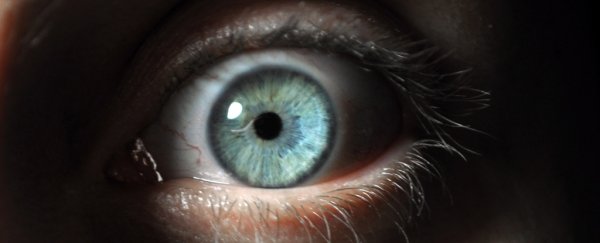If a cluster of small holes makes your stomach turn and your skin crawl, you are not alone.
You're one of around 16 percent of people who experience something called trypophobia - the irrational fear of holes. But, some scientists are now saying, maybe it's not a phobia after all.
That's because, well, it might be rational - and rooted in disgust rather than fear.
Trypophobia is poorly understood, and not recognised by the Diagnostic and Statistical Manual of Mental Disorders (DSM). So researchers at Emory University set out to study the fear response in relation to clusters of holes.
But they found that the pupillary response - the involuntary movement of the pupils in the eye - was closer to disgust than the pupillary response to fear.
"Some people are so intensely bothered by the sight of these objects that they can't stand to be around them," explained Stella Lourenco, the Emory University psychologist whose lab conducted the study.
"The phenomenon, which likely has an evolutionary basis, may be more common than we realise."
Previous research conducted in 2013 concluded that the response may be related to the speckled patterns of dangerous animals, such as snakes. But in January 2017, a different explanation was put forward.
Researchers at the University of Kent proposed that a pattern of holes, like those that can be found in a lotus pod or honeycomb, arouse our aversion because they resemble parasite infestations, infectious diseases, and decomposition.
"We're an incredibly visual species," said lead author of this latest study, Vladislav Ayzenberg. "Low-level visual properties can convey a lot of meaningful information. These visual cues allow us to make immediate inferences - whether we see part of a snake in the grass or a whole snake - and react quickly to potential danger."
Using images of dangerous creatures is a common and effective method of gauging fear response, so this formed the core of the team's research.
They recruited two batches of students - 41 for the first batch and 44 for the second - and showed them 60 images. Of these, 20 were of dangerous animals such as spiders and snakes; 20 were trypophobia triggers, such as seed pods; and 20 were control images, such as harmless animals, coffee beans, and high-contrast repetitive patterns.
This last was because trypophobia triggers are often high-contrast repetitive patterns, yet "neutral" images of that nature, such as checkerboard patterns, are not known to elicit a trypophobia response.
The researchers were expecting that, as has been observed in other tests of this nature, the study participants' pupils would dilate, or get bigger, as a fear response - and they did. For the dangerous animal pictures.
But for the trypophobia triggers, the participants' pupils constricted, or got smaller. And this is the pupillary response to disgust.
"On the surface, images of threatening animals and clusters of holes both elicit an aversive reaction," Ayzenberg said. "Our findings, however, suggest that the physiological underpinnings for these reactions are different, even though the general aversion may be rooted in shared visual-spectral properties."
The researchers also noted that, rather than the fight-or-flight response that accompanies fear, the disgust response slows the heart rate and breathing - signalling caution, and perhaps trying to minimise exposure to pathogens.
Although the team's research ended up with a different conclusion from the 2013 research, they did agree on one key point - that trypophobia may vary in severity, but it's much more widespread than is self-reported.
This is because none of the participants reported having it - yet the physical response to pictures of holes was significant.
"The fact that we found effects in this population suggests a quite primitive and pervasive visual mechanism underlying an aversion to holes," Lourenco said.
The research probably won't help you feel less queasy next time you see a picture of a Surinam toad, but it does indicate that visual processing can result in intense reactions that aren't fear.
The team's research has been published in the journal PeerJ.
